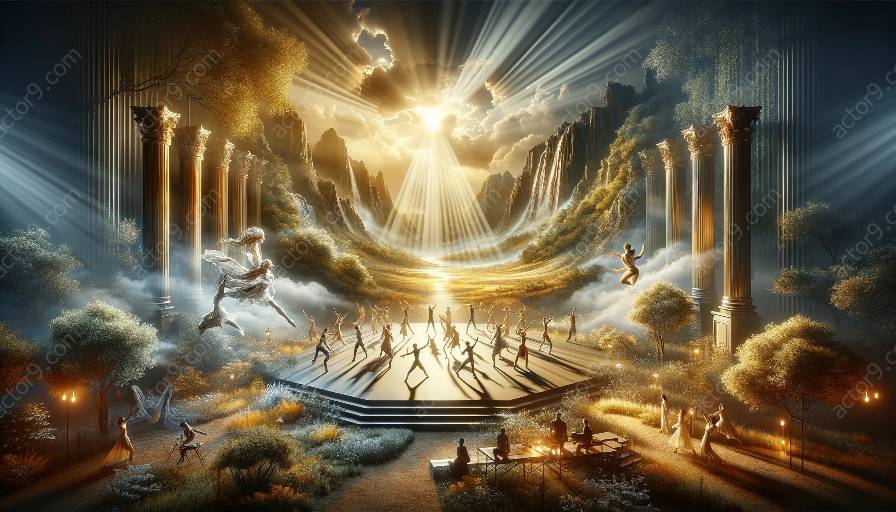Physical theatre is a unique form of performance art that relies on the expressive capabilities of the human body to convey meaning and emotion. One crucial element that deeply influences physical theatre is the use of theatrical lighting. The interplay between lighting design, reality, and illusion in physical theatre is a fascinating topic that enriches the audience's experience and enhances the storytelling.
The Role of Lighting in Physical Theatre: Lighting in physical theatre is not just about illuminating the stage; it is an integral part of the narrative, setting the mood, and creating an immersive environment. The role of lighting goes beyond mere visibility—it is a powerful tool that shapes the audience's perception and emotional response to the performance.
Impact of Lighting Design: The relationship between lighting and physical theatre is multifaceted. Lighting design can transform the stage, alter the audience's perception of space, and evoke different moods and atmospheres. It contributes to the visual composition and dynamics of the performance, highlighting the movements, gestures, and expressions of the performers.
Enhancing Reality and Creating Illusion: Lighting has the ability to blur the boundaries between reality and illusion in physical theatre. It can accentuate the physicality of the performers, amplify their gestures, and manipulate spatial dimensions. Through clever lighting techniques, physical theatre can transport the audience to surreal worlds, evoke imaginary landscapes, or depict heightened emotional states.
Emotional and Psychological Impact: The use of lighting in physical theatre is deeply connected to the emotional and psychological impact it has on the audience. By modulating the intensity, color, and direction of light, designers can guide the viewer's focus and immerse them in the narrative. Lighting influences the perception of time, space, and character dynamics, intensifying the audience's engagement with the performance.
Collaborative Process: In physical theatre, the collaboration between lighting designers, directors, and performers is imperative in creating a cohesive and impactful production. The synergy between the visual and physical elements, coupled with the understanding of storytelling and thematic elements, shapes the overall aesthetic and conceptual framework of the performance.
Unconventional Approaches to Lighting: Physical theatre often challenges traditional lighting conventions by exploring unconventional approaches and experimental techniques. This innovative spirit allows for the development of new visual languages, dynamic spatial relationships, and engaging sensory experiences for the audience.
An Immersive Experience:
The interaction between lighting and physical theatre culminates in an immersive experience that transcends the boundaries of traditional performance. The skillful manipulation of light enhances the performers' expressiveness and amplifies the thematic depth, creating an unforgettable sensory journey for the audience.
In Conclusion:
The relationship between theatrical lighting and reality in physical theatre is a captivating exploration of the transformative power of light. It plays a pivotal role in shaping the narrative, fostering emotional connections, and blurring the lines between the tangible and the abstract. Understanding the intricate dynamics between lighting, reality, and illusion elevates the artistry of physical theatre and enriches the audience's perception of performance art.




































